What Is Dog Collar Rash and How to Prevent Collar Chafing?
Wearing a collar is the quintessential part of being a dog! Not only does it mean “this is my hoo-man”, but it also serves as a crucial identification channel for your dog’s ID tag, and for quick attachment of the “oh-so-exciting” leash when it’s time for walkies.
However, wearing a collar isn’t necessarily cut and dry. Some collars can irritate a dog’s skin, often causing a variety of skin conditions. Fret not!
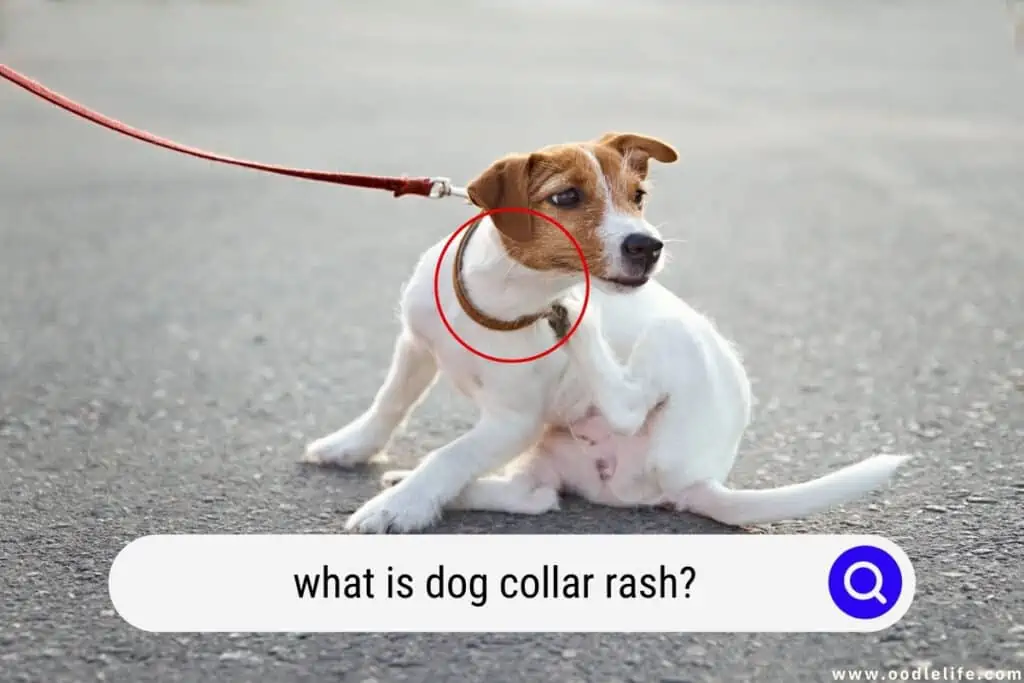
Chafing is just an abrasion caused by repeated contact with an irritant (like a collar!)
A harness, collar, life jacket, or dog costume, is usually to blame. Because it does not include yeast or germs, chafed skin is probably the easiest to treat.
What Is A Dog Collar Rash?
Dog collar rash is a type of skin irritation that can occur when a dog wears a collar that is too tight or made from materials that are irritating to the skin. The rash is usually characterized by red, inflamed skin and may be accompanied by itchiness, flaking, and hair loss.
In severe cases, a dog collar rash can lead to secondary infections. While most dog collar rashes are not serious, they can be uncomfortable for your pet and should be treated promptly.
In addition, rashes and other skin issues can be caused by several things, including allergies, parasites, underlying medical conditions, and even behavioral issues like boredom or stress.
Fortunately, with the right treatment plan, symptoms may often be eliminated or decreased. For the best treatment, it is critical to determine what caused the rash in the first place.
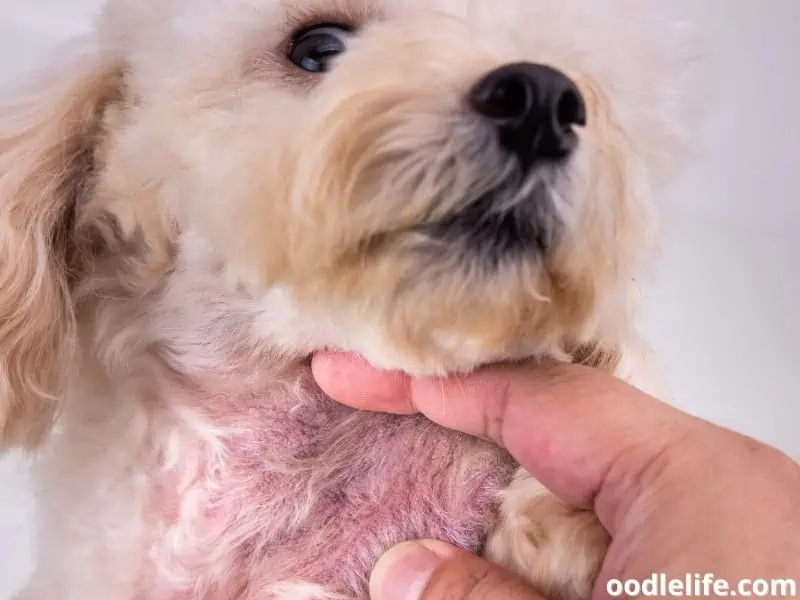
Causes Of Skin Rashes
There are several potential reasons for skin problems, all of which might result in identical symptoms. Here are a few examples of the most common:
Flea allergy dermatitis and fleas – An allergic response to flea bites that causes extreme itchiness and commonly leads to skin infections.
Allergies – Most typically, this involves seasonal and environmental allergies, also known as atopy. Food allergies and contact allergies can also be present, although these are less prevalent.
Chemical Contact – Shampoo, home cleaning products, and a collar made from chemical irritants can often cause skin reactions.
Skin Parasites – Mites, mange, ticks, and lice can cause significant skin irritation.
Medical Conditions – Hormonal abnormalities, autoimmune illnesses, and other underlying difficulties are examples of medical conditions.
Excessive Chewing Or Licking – Usually a result of stress, anxiety, or boredom.
Infections – Bacteria and fungi can cause infections that can break the skin’s protective barrier and result in complications. Infections most commonly happen in open wounds or rashes.
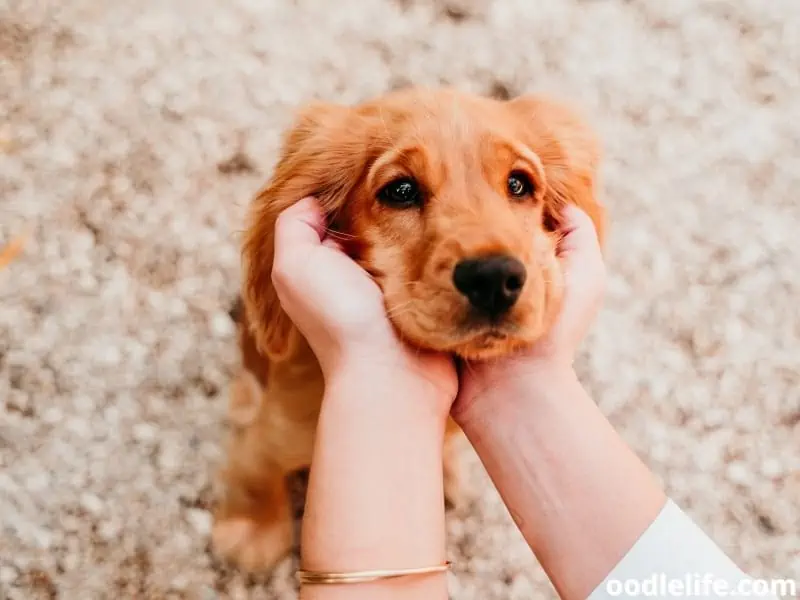
Symptoms Of Dog Rashes
While not exhaustive, some of these symptoms are sure signs that your dog has a skin condition.
- Skin sensitivity
- Itchy skin
- Chewing or scratching at the skin or ears
- Rubbing against the floor, furniture, or people
- Hair loss that is excessive
- Lackluster fur or bald patches
- Flaky skin and dander
- Skin lumps, pustules (pus-filled bumps similar to pimples), scabs, crusts, or wounds
- Hot spots – Wet, inflammatory skin sores produced by a dog licking, gnawing or scratching at the region repeatedly
- Chronic skin changes such as thickening
- Hives or swelling may be seen in allergic responses
Additional symptoms may emerge depending on the underlying reason. Allergies, for example, may impact the skin as well as create stomach trouble, and a hormonal imbalance may cause both skin problems and an increased frequency of peeing.
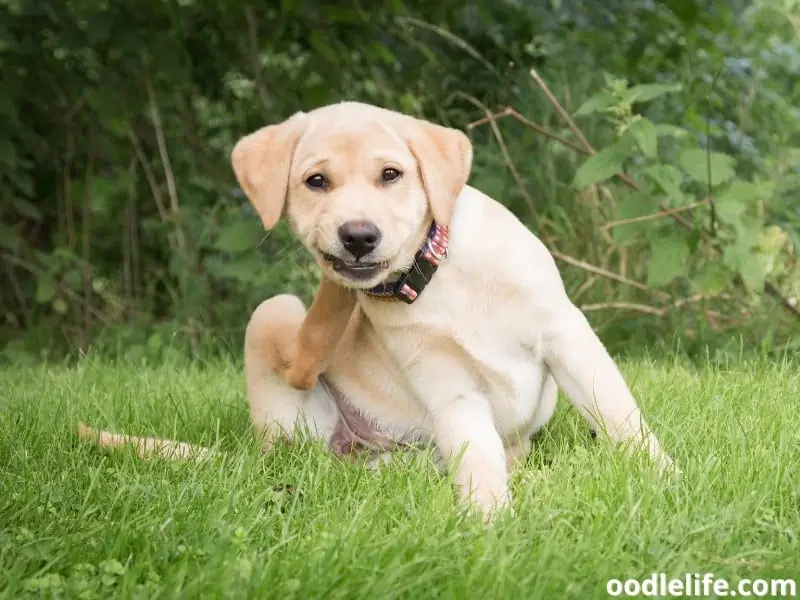
Treatment For Dog Collar Rash
How to cure dog rashes is determined by what caused the rash in the first place. You can administer medications to manage the symptoms and provide some temporary relief. However, if symptoms are addressed without addressing the underlying cause, the problem may reoccur.
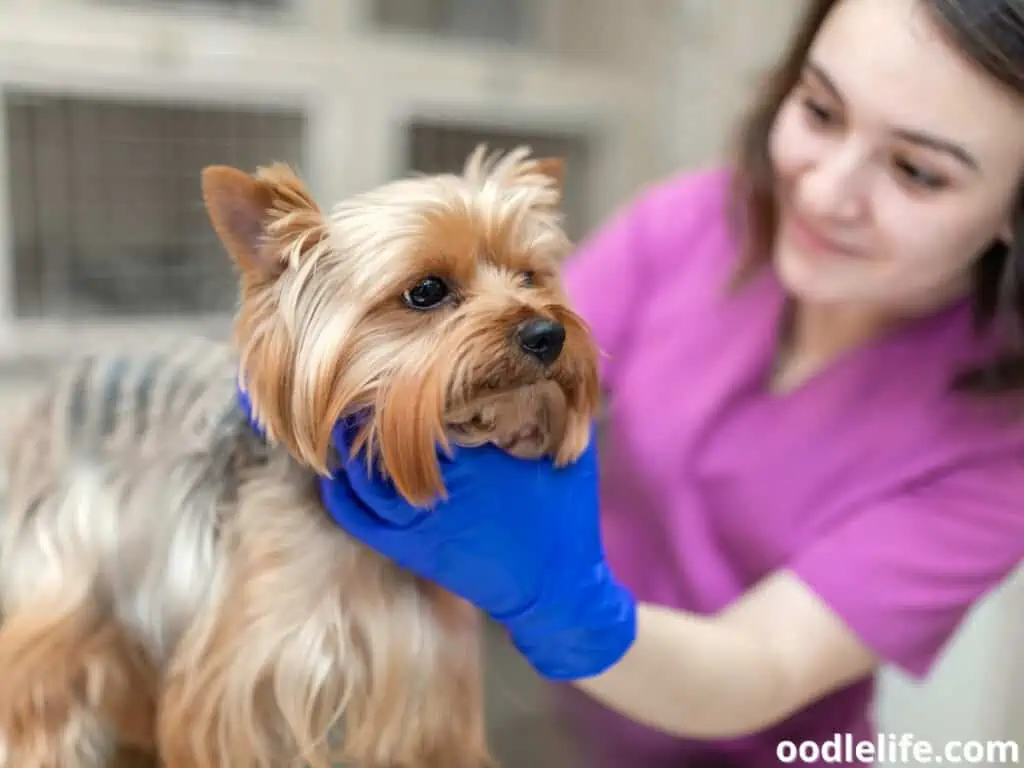
Here are some things you can do to ease your beloved pooch’s discomfort.
Examine And Treat The Affected Area
Remove the collar or anything around the area that could potentially be chafing your dog. Use a warm, moist, flat-textured cloth to clean and dry the affected area, and apply some natural ointments.
Anti-inflammatory natural cures like witch hazel, aloe vera, and coconut oil can help calm the skin, and even if your dog manages to lick it away, these products are safe for consumption.
Switch to the body harness while your dog heals, and leave the affected area abrasion and friction-free.
Healing timeframes vary, but if you haven’t seen any improvement after a week, see your veterinarian.
Check For Infections
Monitor the area closely for any sign of infections. Bacterial and yeast infections can be caused by skin rash, and an infected area will take much longer to heal, causing a significant amount of discomfort in the process.
Check With Your Vet For Medications
Your vet might administer medications for itching and irritation, which often comprise steroidal drugs such as prednisone and cortisone administered as an injection, tablet, topical cream, or ointment.
Antihistamines are more successful in preventing allergic responses than they are at treating symptoms, although they can still be beneficial in the treatment strategy. They may also be prescribed for future preventative usage, such as administration at home during allergy season.
A solution for chronic conditions such as allergies is not conceivable; instead, therapy focuses on symptom management and reducing flare-ups.
How To Prevent Collar Chafing ?
If you suspect chafing, remove the collar and switch to a body harness to let the skin heal and the fur regrow. In addition, here are some chafing prevention tips to help your pooch keep his skin on!
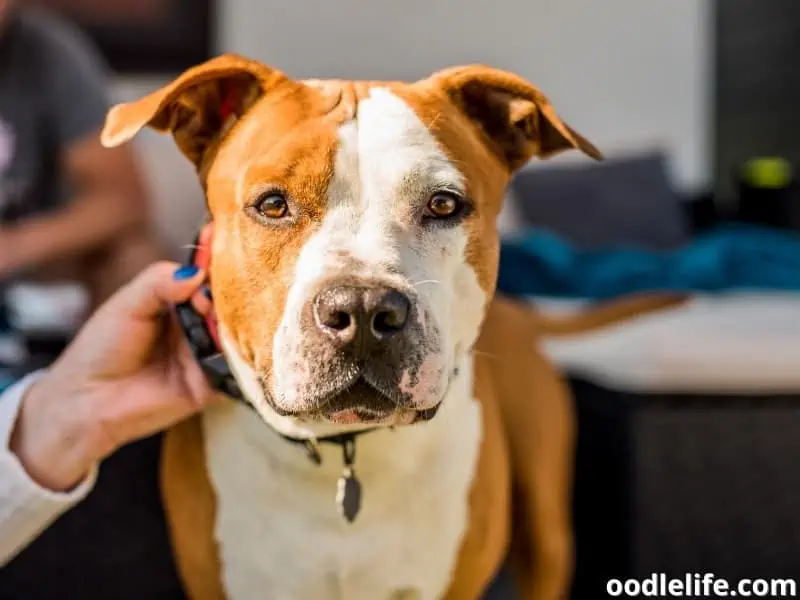
Determine The Source
You can’t fix what you don’t know! First, determine where the chafing is and what is causing it. It is likely that a tight dog collar or harness is the culprit.
Be careful with fitting a collar on too tight. Not only will it cause chafing, but it can also interfere with your dog’s breathing, and cause damage to the sensitive trachea.
If your dog is a boisterous walker on the leash and loves pulling, think about getting a head halter or anti-pull collar instead of constantly tugging on the collar to correct the behavior.
Ensure The Collar Fits
Most dog parents know this, but at the risk of overexplaining, your dog’s collar should fit so that two fingers can comfortably slide between the collar and your dog’s skin. There, we’ve said it.
If the collar still rubs roughly, consider purchasing or manufacturing additional padding to cushion the region between your dog’s skin and the harness.
If there is any dampness around your dog’s neck, remove the collar or harness and allow the area to dry.
Tips On Choosing The Right Dog Collar
Not all collars are created equal! To assist you in selecting the best collar for your puppy, here are some tips.
1. Start With A Flat Collar
These are the most prevalent kind of dog collars on the market since they fit practically all canines. To get a little puppy acclimated to wearing a collar, start with a flat collar. Because it features adjustable lengths and snaps closure, this collar allows the puppy to readily adjust to it.
However, never leave your puppy alone in the house with its collar on, since no matter how slim, this might still be a strangulation risk.
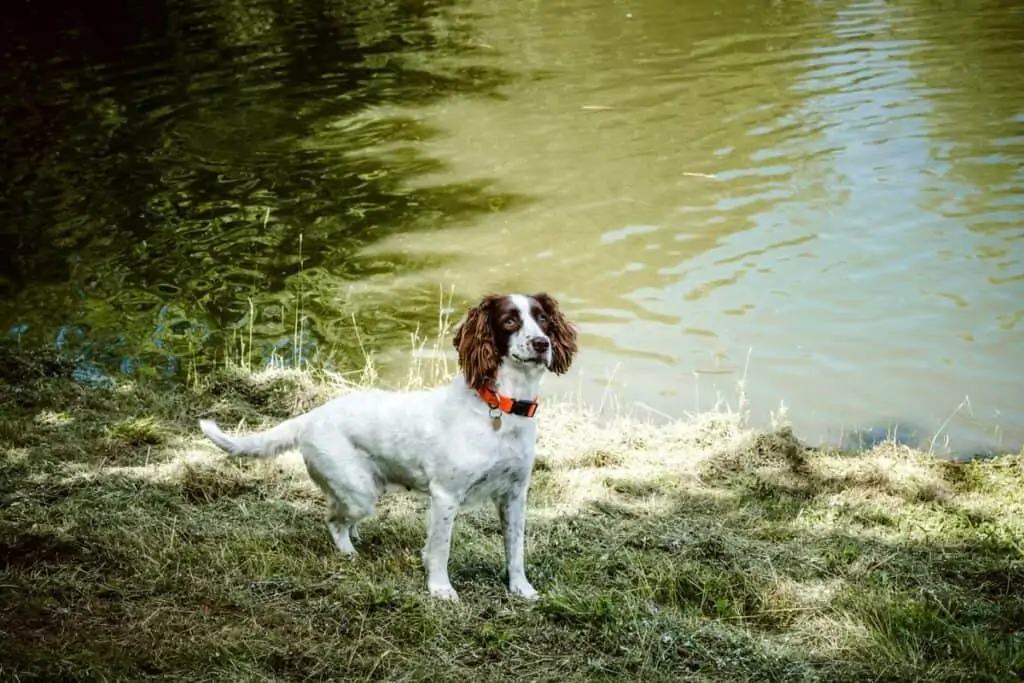
2. Breakaway Collar for an Active Puppy
This collar is specifically intended for extra-active pups or those that enjoy exploring outside. The breakaway collar is built with a snap clasp or clip that may be readily undone if they come across any obstacles like branches or fences, or if there is a choking threat.
After your dog has become accustomed to wearing a flat collar, you may switch them to a breakaway collar.
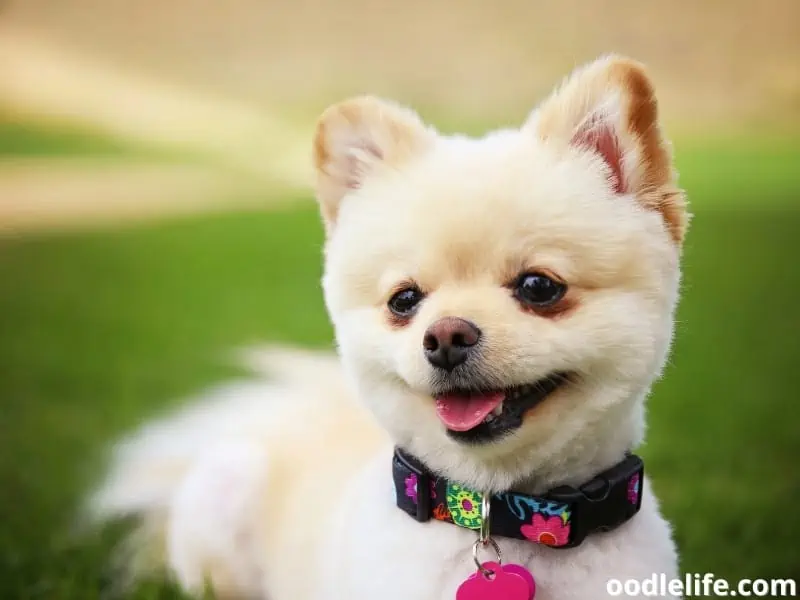
3. Material of the Collar
Collars are made from a variety of materials, including leather, metal, and nylon. Select a material based on comfort, softness, and durability. Always try to buy organic and natural whenever possible, as these products are likely to not have any harmful chemicals that can irritate your dog’s skin.
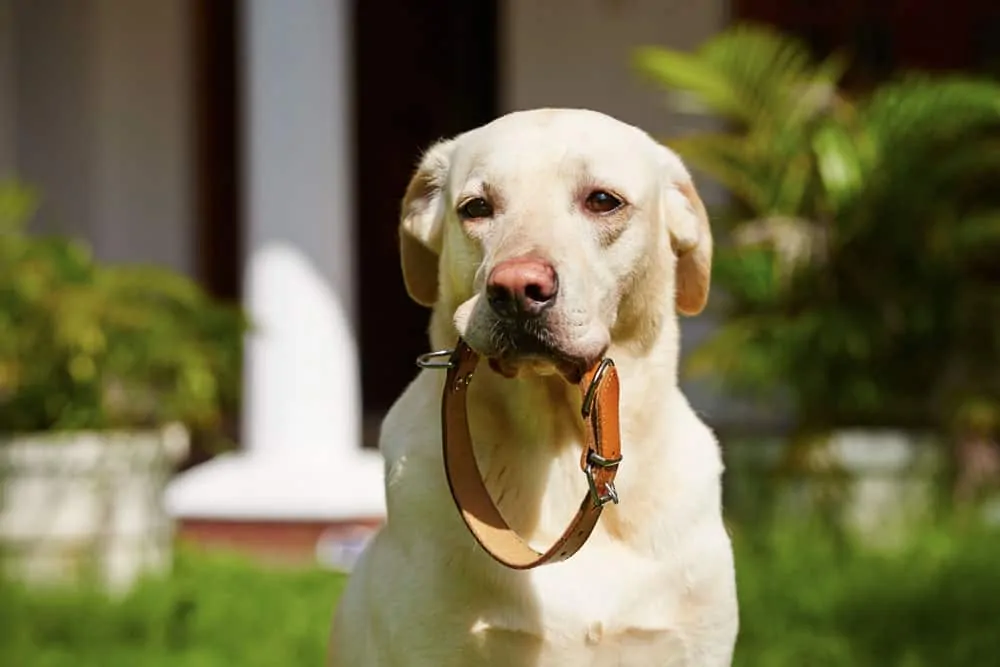
4. Size of Puppy’s Neck
Measure the circumference of your puppy’s neck with a measuring tape and ensure that the collar fits. If your puppy has loads of growing to do, get an adjustable collar so you don’t have to size up every few months.
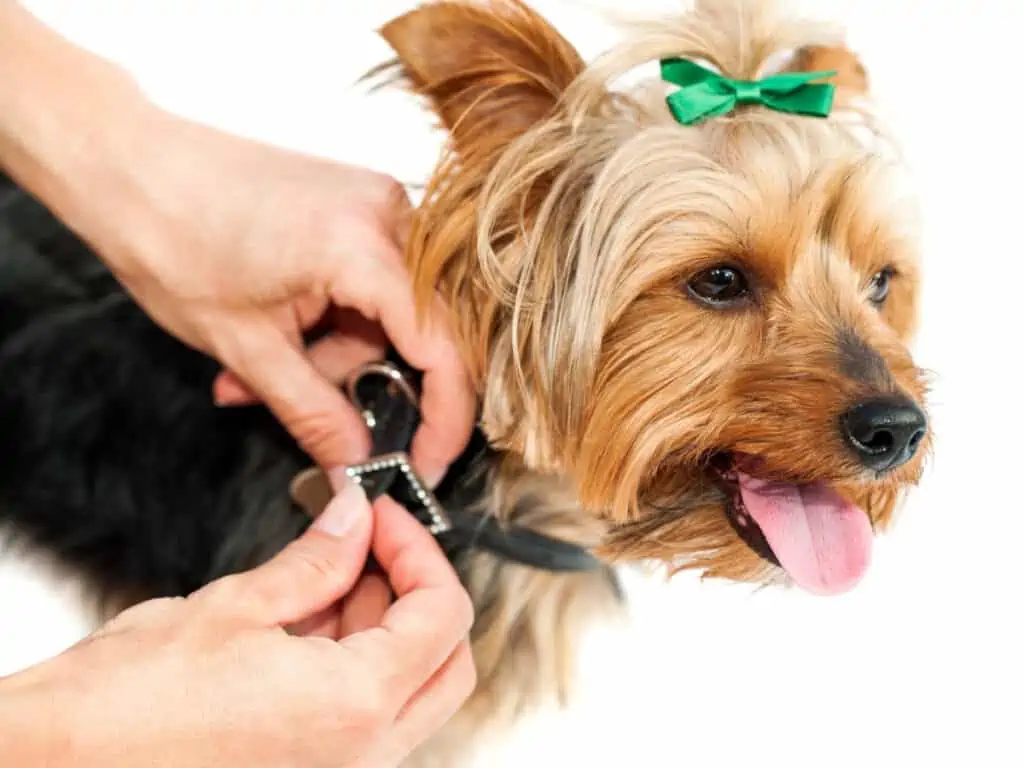
5. Fur Type
Choosing the right collar for your dog is important for both comfort and safety. If your dog has a thick coat, you’ll want to avoid anything that could cause matting or discomfort. A martingale collar is a good option for dogs with thicker fur, as it’s designed to tighten when pulled on but doesn’t put constant pressure on the neck.
If your dog has a thinner coat, you may want to choose a collar with additional padding to help avoid chafing.
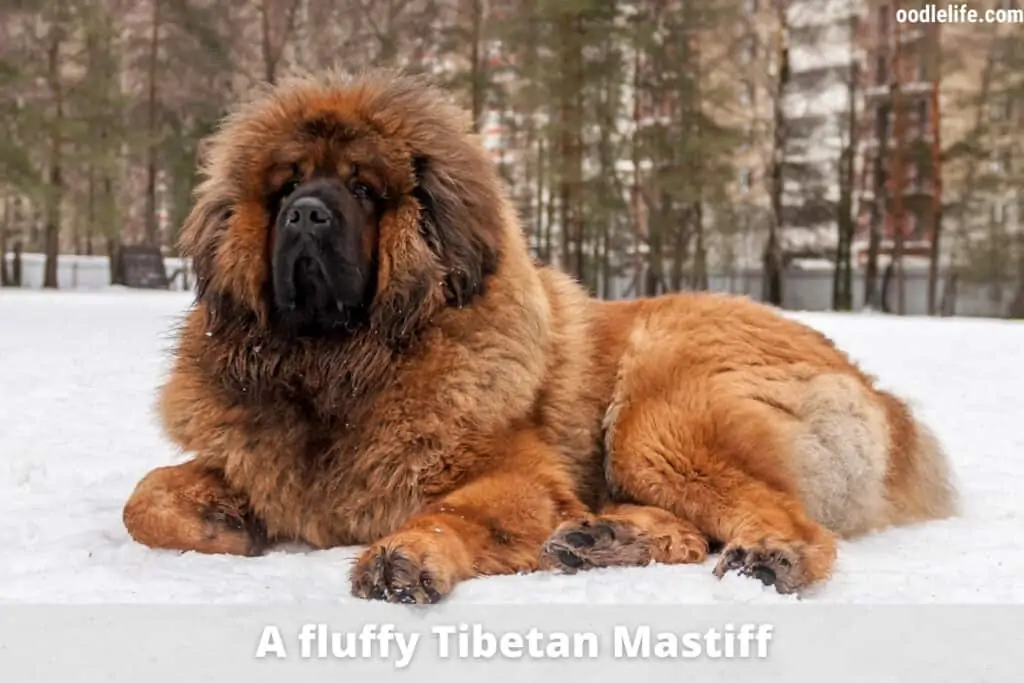
Final Thoughts
Dog collar rash can be caused by a number of things, including rubbing, allergies, and even improper fit.
Fortunately, there are a few simple steps that you can take to help prevent your dog from developing this uncomfortable, or worse, painful condition.
By taking the simple precautions listed above, you can help keep your dog healthy and happy!